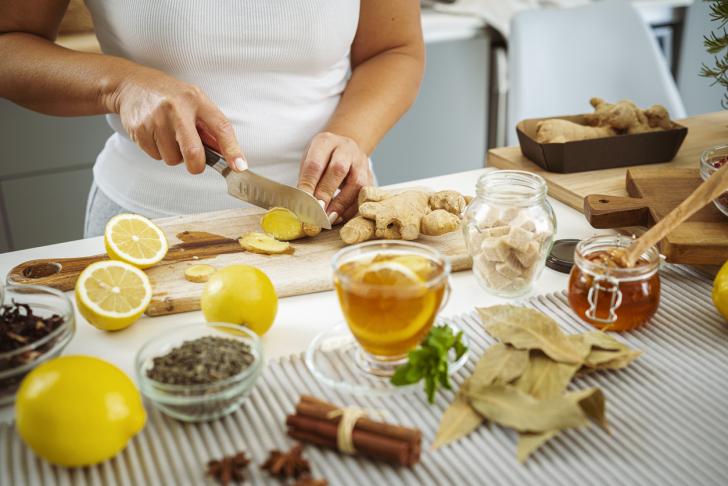Program Overview
Childbirth educators provide information and training to expectant parents in preparing for labor, birth, and the postpartum period. This comprehensive & engaging educational experience prepares perinatal educators with vast content knowledge & excellent teaching skills. Our Childbirth Educators are prepared to teach prenatal education, labor & delivery preparation, advocacy & decision making, postpartum, lactation, & newborn care classes, & more!
varies
International Childbirth Education Association (ICEA) and Lamaze approved
Meets the prerequisite for the Bastyr Master of Science in Midwifery program
$959
About the Course
The Childbirth Educator Trainingincludes 14+ modules in an online classroom platform in addition to in-person or remote-live sessions.
Students learn the basics of how to teach childbirth and newborn care to adults. Instructors model a variety of teaching techniques including lecture, use of audio-visual aids, role-playing, active learning methods and small group activities. Students apply their learning through practice teaching sessions, which offer each student a chance to give a short presentation to peers and receive an experienced childbirth educator's feedback.
Topics include:
-
The History of Childbirth Education
-
Scope of Practice for the Childbirth Educator
-
Art and Science of Learning and Teaching
-
Reproductive anatomy and physiology
-
Fetal Development
-
Physical Changes in Pregnancy
-
Emotional Experience of Pregnancy, Labor and Postpartum
-
Nutrition and Exercise in Pregnancy
-
Prenatal Care and Prenatal Testing
-
Complications and Interventions in Pregnancy, Labor and Birth
-
Stages of labor
-
Comfort Measures for Labor
-
Pain Medications
-
Birth-Planning and Informed choice
-
Cesarean Birth
-
Postpartum, Breastfeeding, Newborn Care and Safety
-
Transformation of Birth, Postpartum and Early Parenthood
-
Learning Objectives and Developing a CBE Curriculum
-
Dynamics of Group Learning
-
Teaching Strategies
-
Curriculum Development
-
Understanding Research and Evidence-based Practice
-
Designing Evaluations
-
Certification and Job Opportunities
Since most expectant parents plan to give birth in a hospital, most opportunities for childbirth educators involve teaching about hospital birth. Therefore, the class focuses primarily on how to teach about hospital birth, although out-of-hospital birth is also addressed.
NOTE: Completion of online learning modules is required before the end of course. Depending on your current knowledge and experience, this will take between 20-40+ hours to complete. This time-range estimate includes several hours of prerequisite (prior to the start of class) module review in Canvas and InJoy’s “Understanding Birth” e-class.
Required Texts
-
Pregnancy, Childbirth, and the Newborn by Penny Simkin et .al. (most recent edition)
Recommended Texts
-
Maternity and Women's Health Care by Deitra Lowdermilk and Shannon Perry
-
The Breastfeeding Answer Book by Nancy Mohrbacher and Julie Stock
-
The Ultimate Breastfeeding Book of Answers by Jack Newman and Teresa Pittman
-
Birthing Justice: Black Women, Pregnancy and Childbirth Edited by Julia Chinyere Oparah and Alicia Bonaparte
This course fulfills the prerequisite for the Bastyr Master of Science in Midwifery Program. More information here.
International Childbirth Education Association (ICEA) certification and/or recertification and includes 24 ICEA contact hours. Completion of this training meets the criteria for the following requirements towards ICEA Certification: (1) Attend a teacher-led workshop, (2) Review of study guide & readings, (3) Complete an evaluated teaching series, and (4) Observe one childbirth class and three births. Information on how to certify with ICEA here
Great Starts Birth and Family Education recognizes the CET as one step toward certification as childbirth educator.
Lamaze recognizes the CET as an Approved Formal Course towards their certification process. Information on how to certify with Lamaze here.
The Childbirth Educator Training is a hybrid course that includes live sessions (in-person or remote), plus extensive online learning modules. The online modules are released and available around 30 days before the first day of the workshop. Due to the nature of this hybrid course, transfers, refunds, and make-up policies will differ from other Simkin Center courses.
Cancellation Policy
- Cancellation requests made at least 30 calendar days before the first day of the workshop are eligible for a full refund, minus a $150 processing fee.
- Cancellation requests made less than 30 calendar days before the start of the class are not eligible for a refund.
Transfer Policy
- Transfer requests must be made at least 30 calendar days before the first day of the workshop and will incur a $100 processing fee.
Make-Up Policy:
- Attendance for 100% of the live course sessions (in-person or remote) is required.
- No refunds are provided for no shows or missed portions of the course.
- To obtain your certificate of completion, it is necessary for you to attend all sessions and successfully complete all assignments.
- It may be possible to make-up missed sessions of the course with approval from the instructor and the Simkin Center Director. This might involve attending missed sessions during a future Childbirth Educator training.
- Please note that a $100 processing fee, plus $100 per makeup session will apply.
- If you have missed any sessions and need to explore your options for make-up, please contact us. We will be glad to assist you.
To be eligible for a refund or transfer, you must submit your request in writing via email, [email protected], even if you initiate the process via Catalog.
The Simkin Center reserves the right to cancel courses due to insufficient enrollment or circumstances beyond our control.
If you have any questions about our registration policies, please don't hesitate to contact us via email at [email protected] or give us a call at (425) 602-3378.





